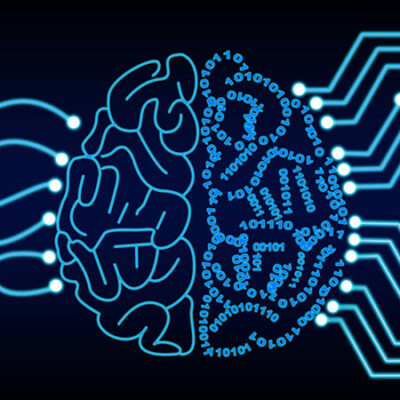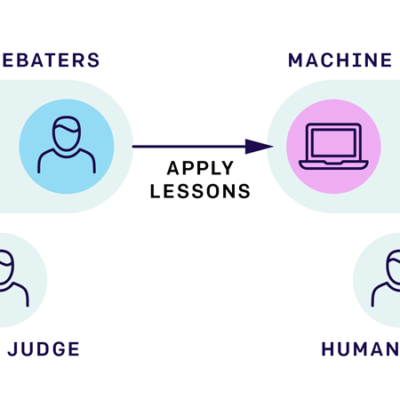Using Artificial Intelligence to Augment Human Intelligence
March 23, 2022What are computers for?
Historically, different answers to this question – that is, different visions of computing – have helped inspire and determine the computing systems humanity has ultimately built. Consider the early electronic computers. ENIAC, the world’s first general-purpose electronic computer, was commissioned to compute artillery firing tables for the United States Army. Other early computers were also used to solve numerical problems, such as simulating nuclear explosions, predicting the weather, and planning the motion of rockets. The machines operated in a batch mode, using crude input and output devices, and without any real-time interaction. It was a vision of computers as number-crunching machines, used to speed up calculations that would formerly have taken weeks, months, or more for a team of humans.
In the 1950s a different vision of what computers are for began to develop. That vision was crystallized in 1962, when Douglas Engelbart proposed that computers could be used as a way of
. In this view, computers weren’t primarily tools for solving number-crunching problems. Rather, they were real-time interactive systems, with rich inputs and outputs, that humans could work with to support and expand their own problem-solving process. This vision of intelligence augmentation (IA) deeply influenced many others, including researchers such as Alan Kay at Xerox PARC, entrepreneurs such as Steve Jobs at Apple, and led to many of the key ideas of modern computing systems. Its ideas have also deeply influenced digital art and music, and fields such as interaction design, data visualization, computational creativity, and human-computer interaction.
Research on IA has often been in competition with research on artificial intelligence (AI): competition for funding, competition for the interest of talented researchers. Although there has always been overlap between the fields, IA has typically focused on building systems which put humans and machines to work together, while AI has focused on complete outsourcing of intellectual tasks to machines. In particular, problems in AI are often framed in terms of matching or surpassing human performance: beating humans at chess or Go; learning to recognize speech and images or translating language as well as humans; and so on.
This essay describes a new field, emerging today out of a synthesis of AI and IA. For this field, we suggest the name artificial intelligence augmentation (AIA): the use of AI systems to help develop new methods for intelligence augmentation. This new field introduces important new fundamental questions, questions not associated to either parent field. We believe the principles and systems of AIA will be radically different to most existing systems.
Our essay begins with a survey of recent technical work hinting at artificial intelligence augmentation, including work on generative interfaces – that is, interfaces which can be used to explore and visualize generative machine learning models. Such interfaces develop a kind of cartography of generative models, ways for humans to explore and make meaning from those models, and to incorporate what those models “know” into their creative work.
Our essay is not just a survey of technical work. We believe now is a good time to identify some of the broad, fundamental questions at the foundation of this emerging field. To what extent are these new tools enabling creativity? Can they be used to generate ideas which are truly surprising and new, or are the ideas cliches, based on trivial recombinations of existing ideas? Can such systems be used to develop fundamental new interface primitives? How will those new primitives change and expand the way humans think?
Using generative models to invent meaningful creative operations
Let’s look at an example where a machine learning model makes a new type of interface possible. To understand the interface, imagine you’re a type designer, working on creating a new font 1 . After sketching some initial designs, you wish to experiment with bold, italic, and condensed variations. Let’s examine a tool to generate and explore such variations, from any initial design. For reasons that will soon be explained the quality of results is quite crude; please bear with us.










